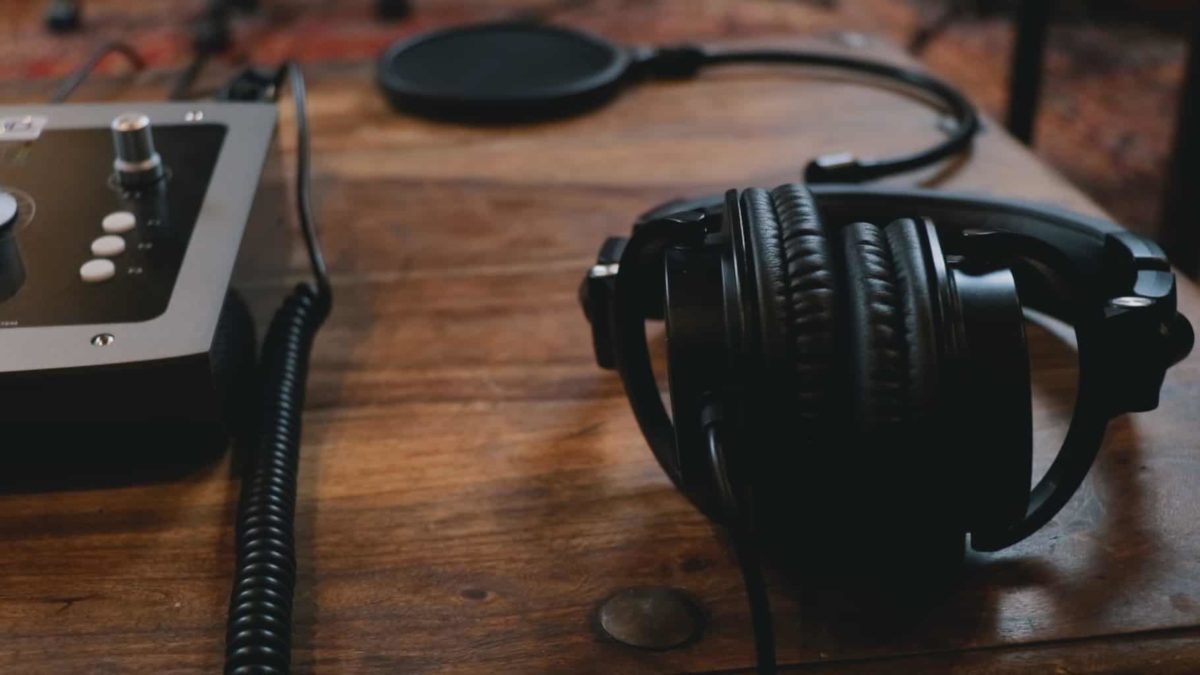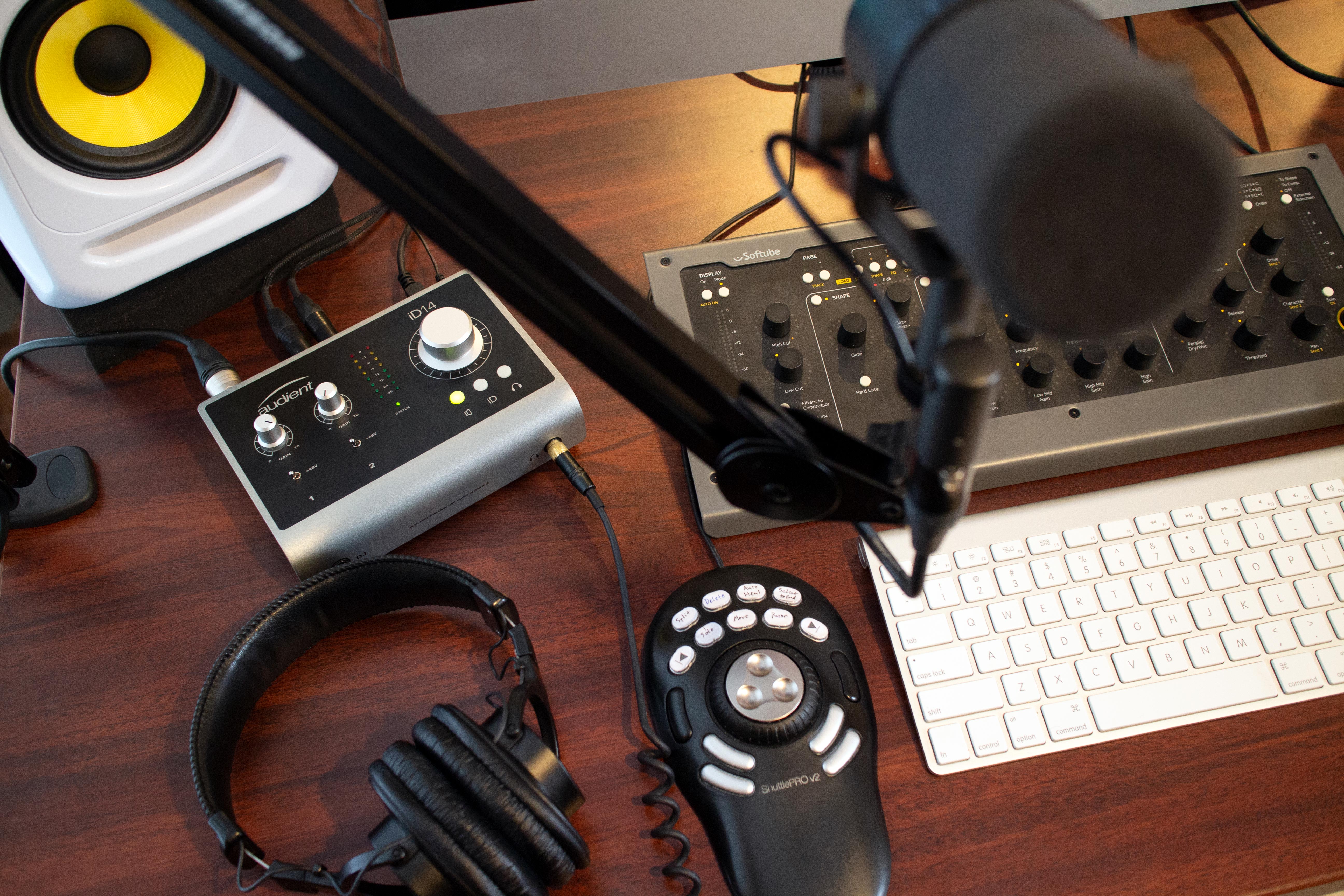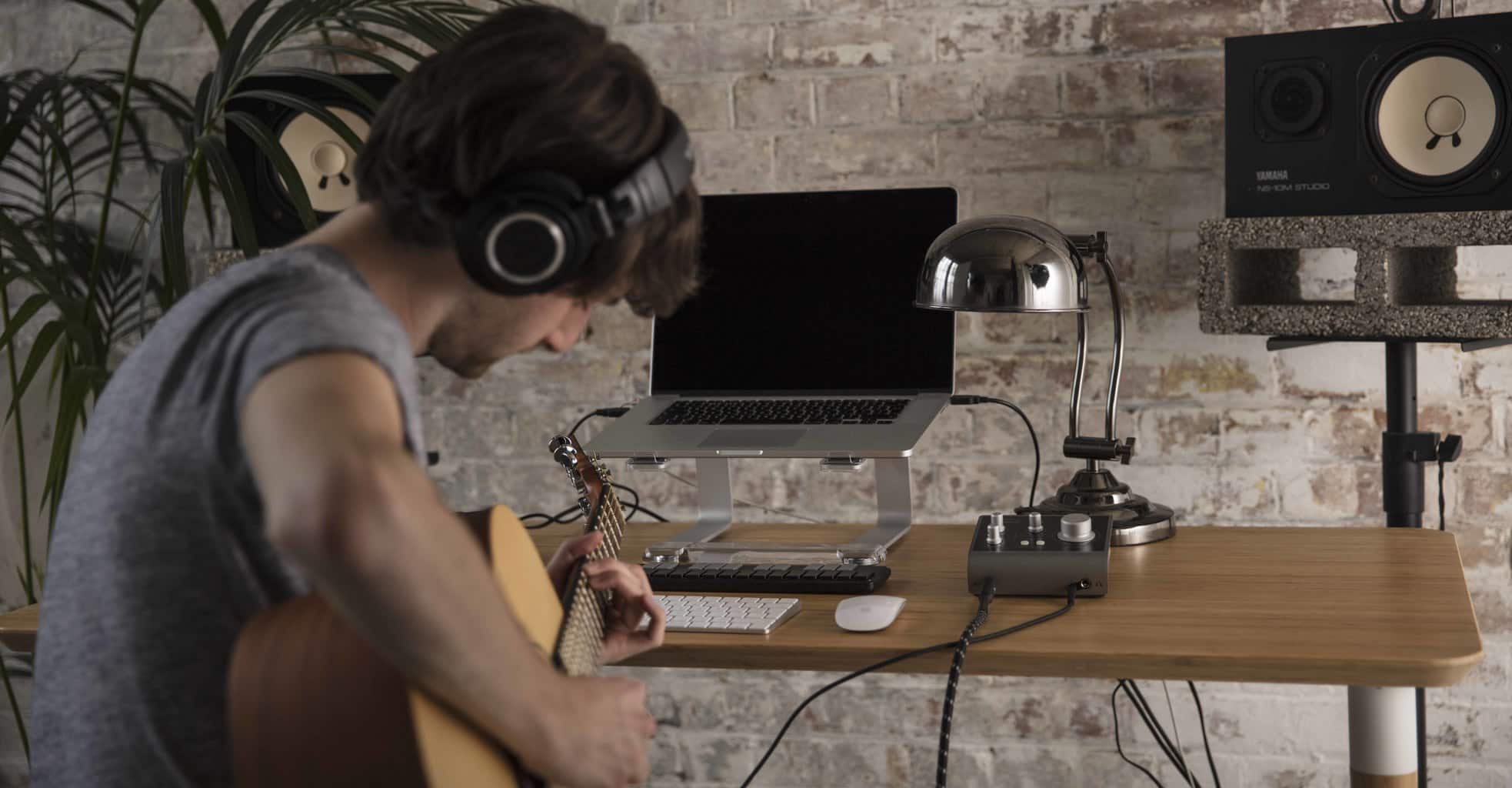Miking up a drum kit in the studio (and, indeed, on stage for live performance) is among the most challenging of audio engineering ventures, but also one of the most rewarding – there’s really nothing quite like successfully capturing a great drum sound that you can proudly call your own.

Written by EVO
With the drum kit being such a multi-faceted instrument, there are numerous things to take into account when recording it in your home studio, chief among them being the number of mics and audio interface inputs available to you, the size and quality of the kit itself, and the acoustic properties of the space in which it sits.

The last of these factors might be largely out of your control, as your spatial options at home are unlikely to be particularly drum-friendly; so just do you what you can to dampen room reflections as much as possible with soft furnishings, duvets hung on walls, etc. As for the kit, it should be properly tuned as befits the song, and individual drums will probably need damping in order to prevent excessive overtones and sympathetic resonances. We won’t get into the details of any of this here, but there’s plenty of information to be found online on tuning and setting up drums if your drummer isn’t an expert on that particular aspect of their craft.
Also, be sure to ditch any element of the kit that isn’t required for the recording at hand, as every drum and stand is a potential source of the aforementioned resonance. If, for example, the song only calls for two toms, rather than the three that your drummer has set up, take the unused one down.

Mic check
Ultimately, the degree of mixing flexibility you can achieve with your drum kit recording – and therefore the quality of the final production – is down to the number and specification of the microphones available to you, and the audio interface via which they’re fed into your DAW. It’s perfectly possible to record amazing drum tracks using just a couple of mics and an EVO 4 interface – we’ll reveal several ways of doing exactly that in a future article – but ideally, you’ll have enough mics and input channels (ie, the eight of the EVO 16) to be able to multitrack the kit down to the level of individual drums, a pair of overheads, and possibly the room sound.
The precise positioning of each microphone plays a crucial role in defining your drum sound, so don’t just hurriedly stick them all up, set the gains and hit record – spend time experimenting with angles and distances from drum heads, and make a few test recordings to compare set ups. With all that said, then, here are some drum-specific guidelines.
Kick drum
If your kick drum has an intact front head, place the mic an inch or two in front of it, and play around with the vertical positioning, taking roughly half way between the centre and the rim as the starting point. If the kick has no front head, or a front head with a hole in it, put the mic inside the drum on a stand, and find the point at which a good balance of beater attack and low-end body is achieved. If you’re able to commit two mics to the kick, try combining both methods, blending the two resultant tracks to taste.
There are numerous dedicated kick drum mics on the market, including the AKG D112, Shure Beta 52A and Sennheiser E902, but any dynamic mic can get the job done inside the drum, while a large diaphragm condenser makes a good choice for external front head placement.
Snare drum
Like the kick drum, the snare can be recorded using one or two mics. The first (or only) one should be placed an inch or two above and in from the edge of the batter head, angled to point at the centre; while the second (if available) goes underneath the drum, pointing up towards the centre of the bottom head to capture the rattle and sizzle of the snare wires on a separate track for mixing.
The Shure SM57 is pretty much the industry standard for snare drum recording, thanks to its durability and punchy sound, but again, almost any dynamic mic will do.
Tom toms
Tom mics can be placed similarly to the top snare mic: a couple of inches above the batter head and just in from the rim, pointed at the centre. With toms tending to sustain more than the snare, though, experimenting with mic distances and angles will be necessary to find the sweet spot in terms of attack, body and tail.
Both dynamic and condenser mics are good for recording toms, and you won’t go far wrong with the Audio-Technica ATM25, Sennheiser MD 421-II or Shure Beta 98.
Overheads
A stereo pair of overhead mics is essential for capturing not only the cymbals and hi-hats, but also an energetic ‘overview’ of the kit that brings the whole thing to life when mixed with the individual drum mics. There are many possible overhead placements, but the most straightforward and generally reliable is the spaced pair: that’s one mic on each side of the kit, at about (standing) head height, and equidistant from the snare drum to minimise possible phasing issues.
The condenser mic is the overhead weapon of choice, and leading models include the AKG C214 and Shure KSM141.
Room mics
Finally, if you have the hardware to do it, recording the ambient room sound via a stereo pair of ribbon or large diaphragm condenser mics set up a few feet in front of the kit can greatly expand your sonic options at the mixing stage. Of course, you could just use a reverb plugin instead, but a good real-world drum room recording really can elevate the overall feel of a track if you’re able to facilitate it.
Making gains
Once all your mics are in place, the next stage is setting the gain level on each input channel to optimise the signal-to-noise ratio and ensure that no clipping occurs. Your EVO 4, EVO 8 or EVO 16 gives you a major advantage here over other audio interfaces in the shape of the Smartgain feature, which automatically and intelligently sets the gain for each mic preamp for you. Just press the Smartgain button, select the inputs that you want to set the gains for and press Smartgain again, then have your drummer play the kit at ‘full strength’, as they intend to for the recording. After a few seconds, the Smartgain button will flash green to let you know that every activated preamp has been set so that the input level as played peaks at -12dBFS. Done!

The EVO 16 makes this process even quicker for drum kit recording, with the ability to instantly activate Smartgain for all eight input channels at once by briefly holding down the Smartgain button. It also features stereo linking of channel pairs (1+2, 3+4, etc), which can be handy for overheads and room mics.
Over to you
Drum miking is a complex subject with no end of technical and creative nuances to consider beyond those summarised in this introductory guide. As with all things in music production, though, practise makes perfect, so get stuck in, don’t be afraid to make mistakes as you develop your skills, and rest assured that your EVO interface gives you the cleanest possible signal path from microphone to DAW, ensuring that your recordings always sound their best.

Related Articles
Miking up a drum kit in the studio (and, indeed, on stage for live performance) is among the most challenging of audio engineering ventures, but also one of the most rewarding – there’s really nothing quite like successfully capturing a great drum sound that you can proudly call your own.
Bass guitar is an instrument which is a bit harder to mix than one can imagine. Of course, there is the whole story with the kick and the bass, which has to be taken care of.. But still, many times you may need to add some processing to your bass guitar track in order to make it really pop out in the mix.

Written by EVO
With the drum kit being such a multi-faceted instrument, there are numerous things to take into account when recording it in your home studio, chief among them being the number of mics and audio interface inputs available to you, the size and quality of the kit itself, and the acoustic properties of the space in which it sits.

The last of these factors might be largely out of your control, as your spatial options at home are unlikely to be particularly drum-friendly; so just do you what you can to dampen room reflections as much as possible with soft furnishings, duvets hung on walls, etc. As for the kit, it should be properly tuned as befits the song, and individual drums will probably need damping in order to prevent excessive overtones and sympathetic resonances. We won’t get into the details of any of this here, but there’s plenty of information to be found online on tuning and setting up drums if your drummer isn’t an expert on that particular aspect of their craft.
Also, be sure to ditch any element of the kit that isn’t required for the recording at hand, as every drum and stand is a potential source of the aforementioned resonance. If, for example, the song only calls for two toms, rather than the three that your drummer has set up, take the unused one down.

Mic check
Ultimately, the degree of mixing flexibility you can achieve with your drum kit recording – and therefore the quality of the final production – is down to the number and specification of the microphones available to you, and the audio interface via which they’re fed into your DAW. It’s perfectly possible to record amazing drum tracks using just a couple of mics and an EVO 4 interface – we’ll reveal several ways of doing exactly that in a future article – but ideally, you’ll have enough mics and input channels (ie, the eight of the EVO 16) to be able to multitrack the kit down to the level of individual drums, a pair of overheads, and possibly the room sound.
The precise positioning of each microphone plays a crucial role in defining your drum sound, so don’t just hurriedly stick them all up, set the gains and hit record – spend time experimenting with angles and distances from drum heads, and make a few test recordings to compare set ups. With all that said, then, here are some drum-specific guidelines.
Kick drum
If your kick drum has an intact front head, place the mic an inch or two in front of it, and play around with the vertical positioning, taking roughly half way between the centre and the rim as the starting point. If the kick has no front head, or a front head with a hole in it, put the mic inside the drum on a stand, and find the point at which a good balance of beater attack and low-end body is achieved. If you’re able to commit two mics to the kick, try combining both methods, blending the two resultant tracks to taste.
There are numerous dedicated kick drum mics on the market, including the AKG D112, Shure Beta 52A and Sennheiser E902, but any dynamic mic can get the job done inside the drum, while a large diaphragm condenser makes a good choice for external front head placement.
Snare drum
Like the kick drum, the snare can be recorded using one or two mics. The first (or only) one should be placed an inch or two above and in from the edge of the batter head, angled to point at the centre; while the second (if available) goes underneath the drum, pointing up towards the centre of the bottom head to capture the rattle and sizzle of the snare wires on a separate track for mixing.
The Shure SM57 is pretty much the industry standard for snare drum recording, thanks to its durability and punchy sound, but again, almost any dynamic mic will do.
Tom toms
Tom mics can be placed similarly to the top snare mic: a couple of inches above the batter head and just in from the rim, pointed at the centre. With toms tending to sustain more than the snare, though, experimenting with mic distances and angles will be necessary to find the sweet spot in terms of attack, body and tail.
Both dynamic and condenser mics are good for recording toms, and you won’t go far wrong with the Audio-Technica ATM25, Sennheiser MD 421-II or Shure Beta 98.
Overheads
A stereo pair of overhead mics is essential for capturing not only the cymbals and hi-hats, but also an energetic ‘overview’ of the kit that brings the whole thing to life when mixed with the individual drum mics. There are many possible overhead placements, but the most straightforward and generally reliable is the spaced pair: that’s one mic on each side of the kit, at about (standing) head height, and equidistant from the snare drum to minimise possible phasing issues.
The condenser mic is the overhead weapon of choice, and leading models include the AKG C214 and Shure KSM141.
Room mics
Finally, if you have the hardware to do it, recording the ambient room sound via a stereo pair of ribbon or large diaphragm condenser mics set up a few feet in front of the kit can greatly expand your sonic options at the mixing stage. Of course, you could just use a reverb plugin instead, but a good real-world drum room recording really can elevate the overall feel of a track if you’re able to facilitate it.
Making gains
Once all your mics are in place, the next stage is setting the gain level on each input channel to optimise the signal-to-noise ratio and ensure that no clipping occurs. Your EVO 4, EVO 8 or EVO 16 gives you a major advantage here over other audio interfaces in the shape of the Smartgain feature, which automatically and intelligently sets the gain for each mic preamp for you. Just press the Smartgain button, select the inputs that you want to set the gains for and press Smartgain again, then have your drummer play the kit at ‘full strength’, as they intend to for the recording. After a few seconds, the Smartgain button will flash green to let you know that every activated preamp has been set so that the input level as played peaks at -12dBFS. Done!

The EVO 16 makes this process even quicker for drum kit recording, with the ability to instantly activate Smartgain for all eight input channels at once by briefly holding down the Smartgain button. It also features stereo linking of channel pairs (1+2, 3+4, etc), which can be handy for overheads and room mics.
Over to you
Drum miking is a complex subject with no end of technical and creative nuances to consider beyond those summarised in this introductory guide. As with all things in music production, though, practise makes perfect, so get stuck in, don’t be afraid to make mistakes as you develop your skills, and rest assured that your EVO interface gives you the cleanest possible signal path from microphone to DAW, ensuring that your recordings always sound their best.






